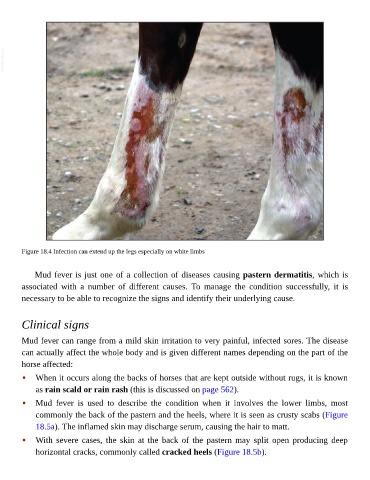Page 821 - The Veterinary Care of the Horse
P. 821
VetBooks.ir
Figure 18.4 Infection can extend up the legs especially on white limbs
Mud fever is just one of a collection of diseases causing pastern dermatitis, which is
associated with a number of different causes. To manage the condition successfully, it is
necessary to be able to recognize the signs and identify their underlying cause.
Clinical signs
Mud fever can range from a mild skin irritation to very painful, infected sores. The disease
can actually affect the whole body and is given different names depending on the part of the
horse affected:
• When it occurs along the backs of horses that are kept outside without rugs, it is known
as rain scald or rain rash (this is discussed on page 562).
• Mud fever is used to describe the condition when it involves the lower limbs, most
commonly the back of the pastern and the heels, where it is seen as crusty scabs (Figure
18.5a). The inflamed skin may discharge serum, causing the hair to matt.
• With severe cases, the skin at the back of the pastern may split open producing deep
horizontal cracks, commonly called cracked heels (Figure 18.5b).

